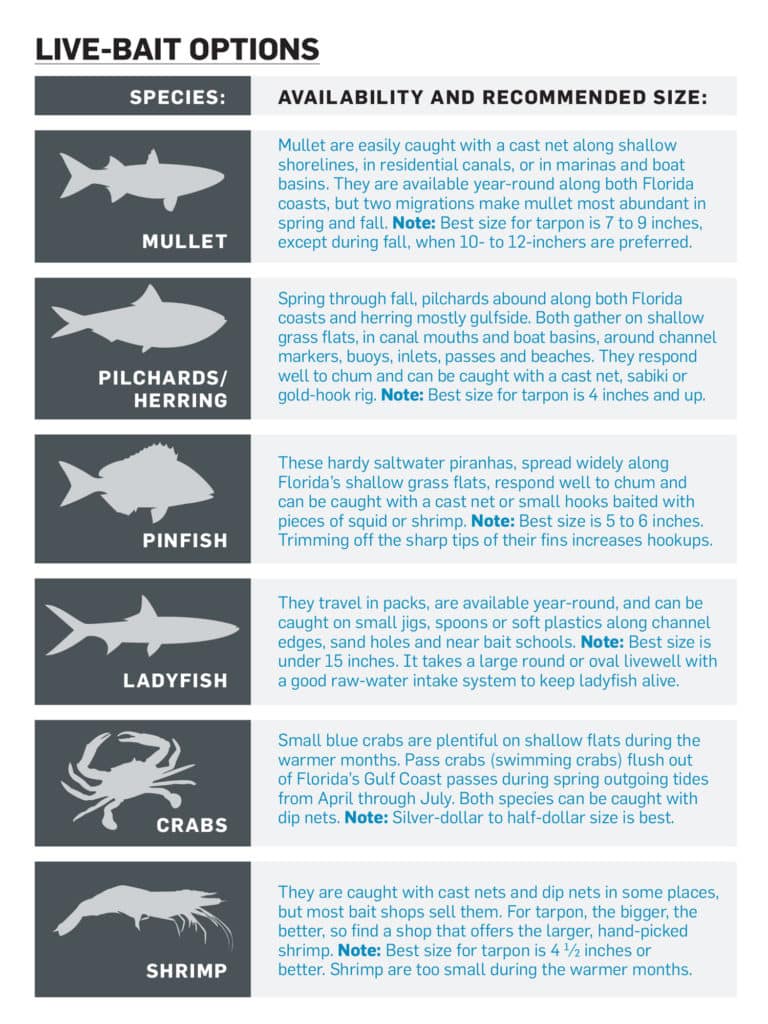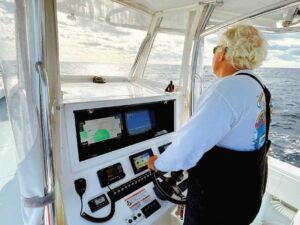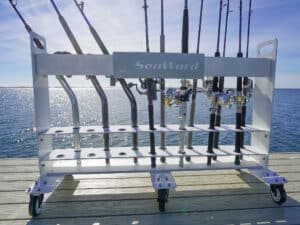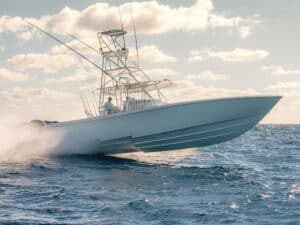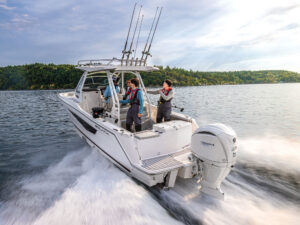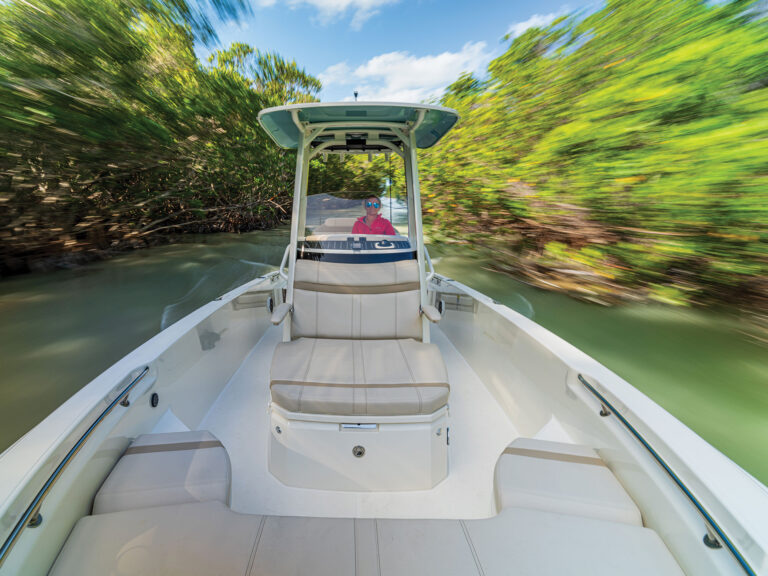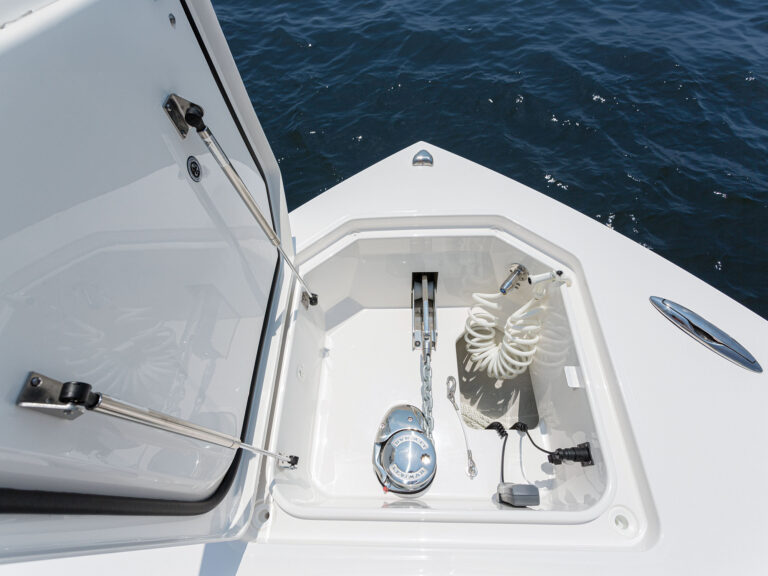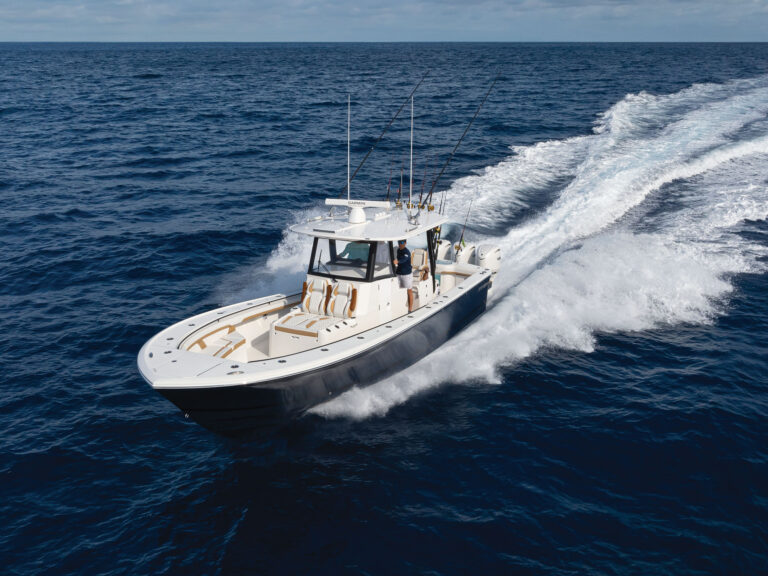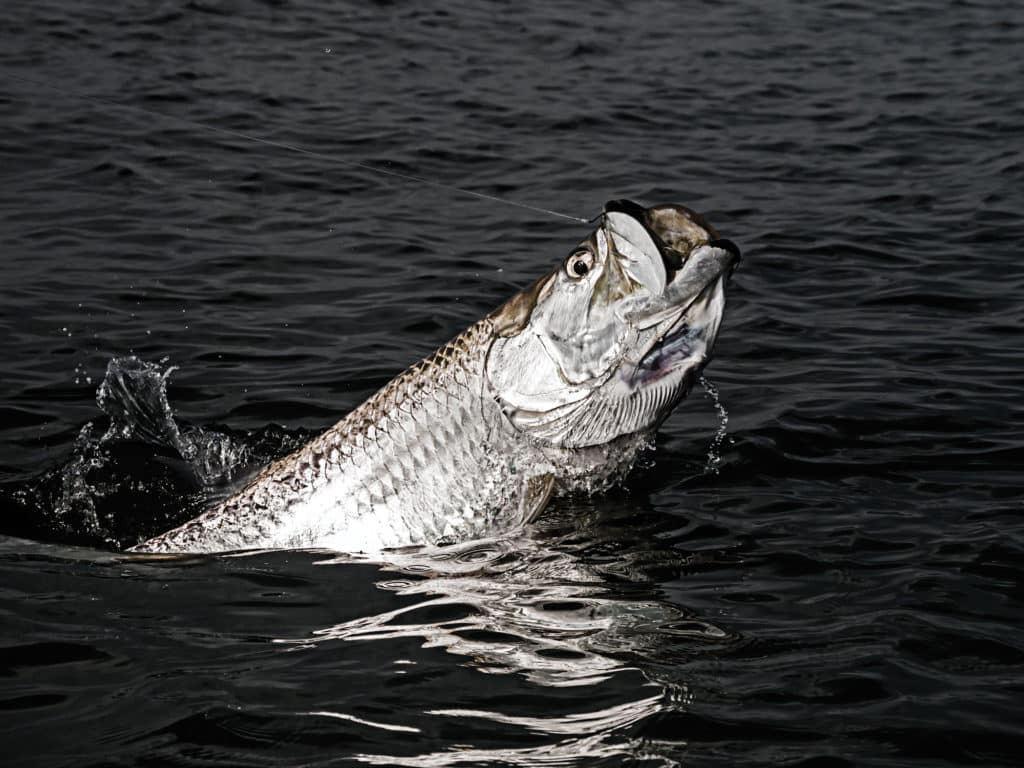
The anchored boat sat still in the current while dozens of tarpon broke the surface, gulping air before disappearing back into the drink. We’d just set a pair of crabs adrift and kept our eyes on the cork floats above them, anticipating the moment they’d go under, signaling the time to strike. My live bait was passing the nearest bridge abutment when the float sank out of sight. I quickly took up the slack, set the hook, and a beautiful 80-pound silver king came crashing out of the water.
That scene took place in Bahia Honda Channel, 30 miles northeast of Key West, during the annual tarpon migration, the late-spring through early-summer run that silver king addicts everywhere await. That’s when anglers get to fling lures and flies at hordes of tarpon traveling along both Florida coasts. But bait for tarpon (live bait that is) works wonders too.
But hot action with acrobatic Megalops atlanticus is not limited to sight-casting artificials or to the time the fish trek in schools across the shallows. Tarpon are caught year-round, in locations ranging from flats and beaches to inlets, river mouths, deep channels and residential canals, by anglers armed only with a supply of live bait and clever tactics.
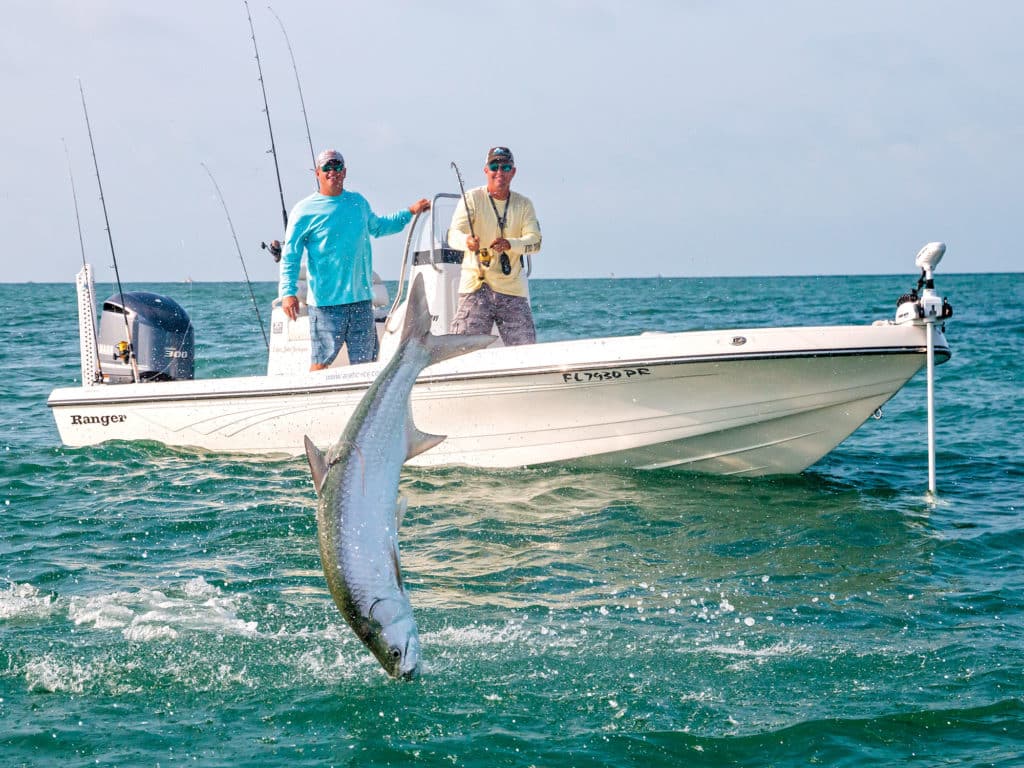
The Tarpon Migration
Once the annual tarpon migration gets underway, the fish, though preoccupied with reproductive urges, remain opportunistic feeders that gladly accept easy morsels presented in a natural manner. Much tarpon feeding takes place after dark, but with fish congregating by the hundreds in certain places from April through early July, daytime success is not only possible, but likely. The spring mullet runs in April trigger fireworks along Florida’s Atlantic and Gulf coasts. That’s when the tide consistently serves up mullet struggling against the current to tarpon bunched up in the channels.
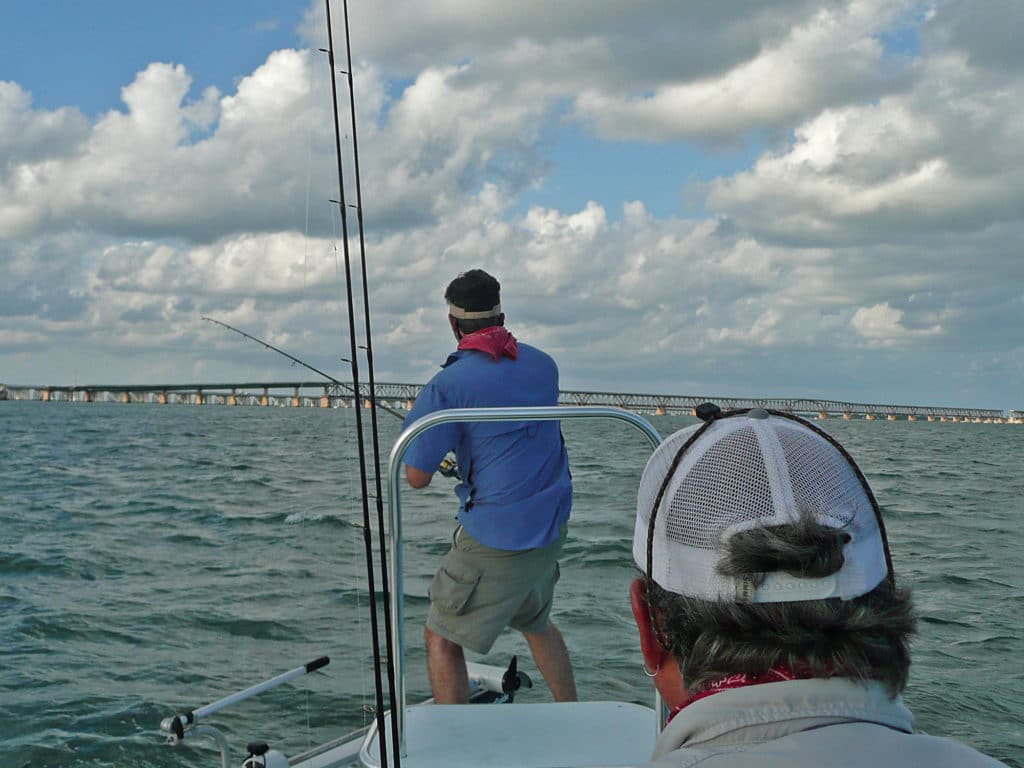
Fishing for Tarpon with Crabs
Nevertheless, some spots are known crab eateries where tarpon respond better to the crustaceans, even when baitfish abound. Such is the case at Bahia -Honda and the Seven Mile Bridge in Florida’s Lower Keys where tarpon show a predilection for the crustaceans in a smaller, 50-cent-coin size usually reserved for permit. Capt. Pete Rapps, who fishes Bahia Honda from March through June, says: “We sometimes use pinfish, pilchards, threadfins and, during the faster tides, mullet. But generally live crabs are hard the best tarpon bait in Bahia Honda.”
Rapps catches fish during both the outgoing and incoming tides, but spring tides (around the new and full moons) concentrate and turn the fish on a little more. The biggest challenge, he says, is a strong wind from the north or the west, which dirties up the water and makes for a tough bite. Crabs are also the go-to bait for tarpon in Boca Grande Pass on Florida’s west coast. Spring tides, known locally as hill tides, flush swimming crabs (aka pass crabs) out of the pass in vast numbers, and tarpon flock to intercept them.

Capt. Daniel Andrews cashes in on the Boca Grande crab feast, but he prefers fishing the beaches. “I avoid the craziness at the pass as much as possible. Last year, my anglers caught 90 percent of their fish along the beaches. I start fishing off Sanibel in April and move north toward Boca Grande as the fish migrate,” Andrews explains. “I want crabs and threadfins in my livewell at all times. Early in the morning, tarpon prefer crabs. By midday, threadfins become a better option. That said, I’ve had days when tarpon bite crabs all day and won’t touch a threadfin.”
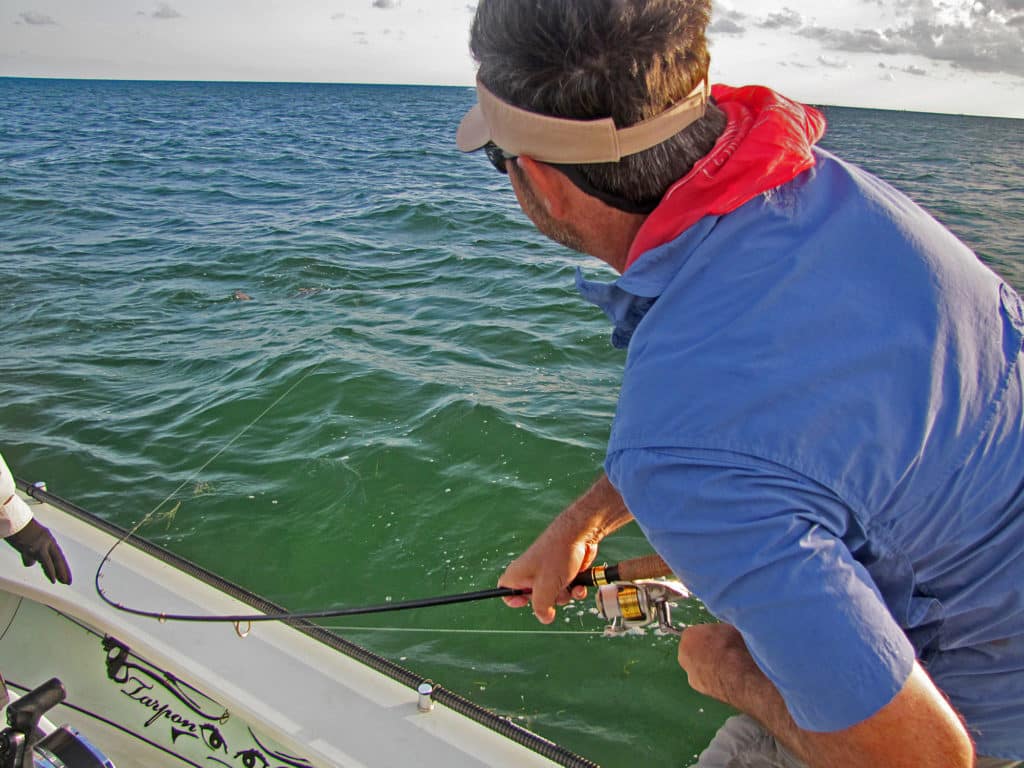
Tarpon Feed Heavily in the Autumn Months
With summer spawning rituals behind them, and winter’s chill and slim pickings on the horizon, tarpon put on their feed bags in autumn, setting their sights on larger prey to fatten up before cold weather arrives. Come August, when most tarpon vacate Boca Grande Pass and the Gulf beaches, Andrews centers his efforts in Charlotte Harbor, scouring deep holes, drop-offs, and the mouths of the Myakka and Peace rivers for signs of fish. “That’s some of the best tarpon fishing we have — no boats and hungry fish. But there are far fewer of them, and they can be anywhere in Charlotte Harbor in 10 to 20 feet of water, so finding them is tricky.”
Then, ladyfish suddenly become a coveted seasonal special on the menu. Anglers catch several on small lures around schools of glass minnows, small pilchards or threadfins and free-line them on heavy spinning or conventional tackle, as many of the fish that strike the ladyfish are large specimens of 120 pounds or more.
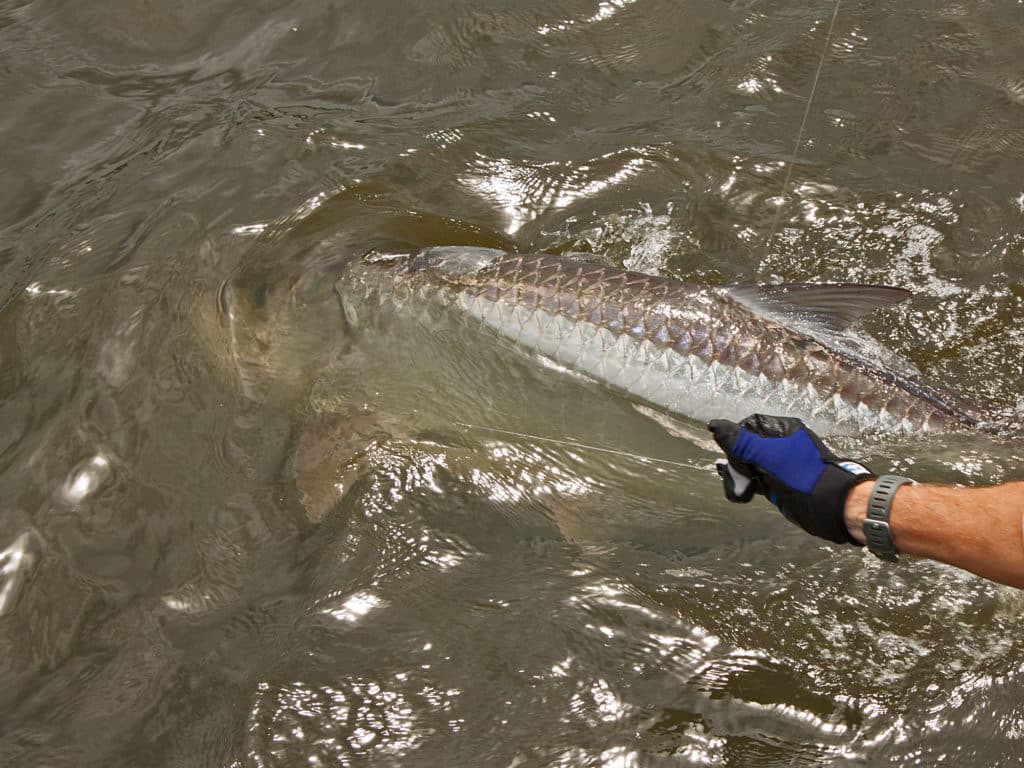
Mullet are Great Bait for Tarpon
The fall mullet runs along both Florida coasts are also major events. Packs of hungry tarpon follow the baitfish pilgrimage, tearing into the schools along the beaches throughout the day and ambushing them at the passes, inlets, river mouths and channel bridges after dark. Free-lining mullet and ladyfish at night, up-current of major channel bridges like those at the mouths of the Myakka and Peace rivers, pays off. Anchoring is then required to drift the baits with the tide toward the bridge-shadow line.
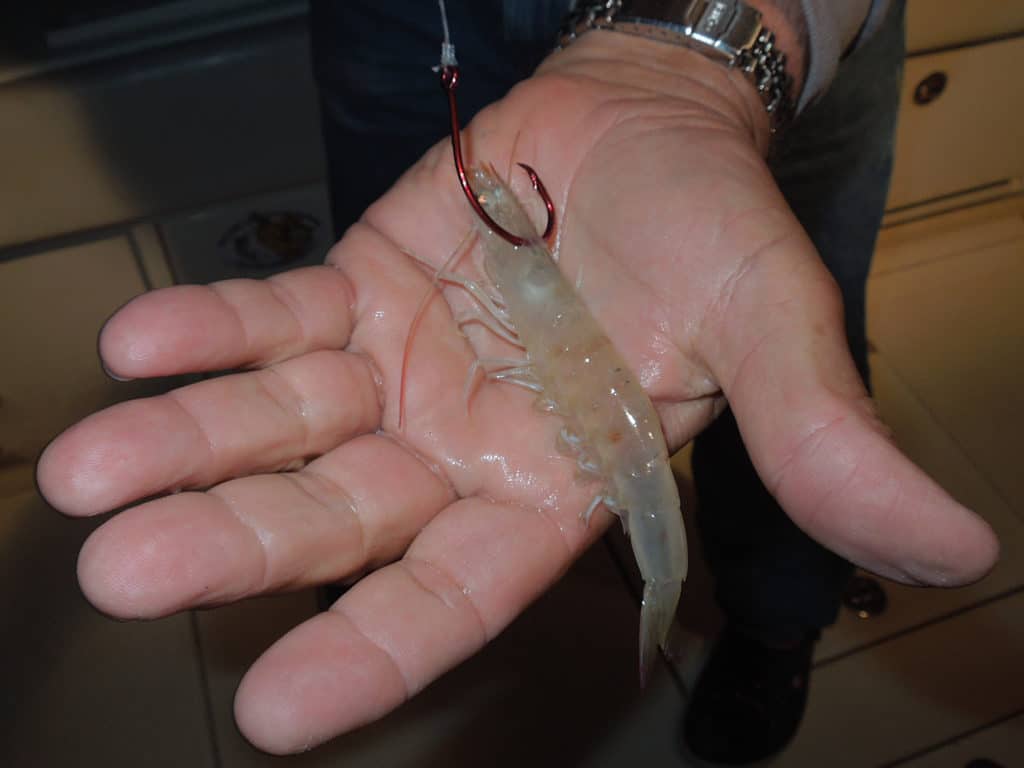
Wintertime Tarpon Fishing in South Florida
December, tarpon head for their wintry hangouts, huddling either up coastal rivers where warmer water emanates from springs or power-plant cooling chambers, or in deep inlets and passes where a thermocline far down the water column keeps the fish comfortable. Northwest Channel and other smaller channels around Key West, and Miami’s Haulover Inlet and Government Cut (aka Miami Harbor Entrance) see large congregations of tarpon in winter.
Anchoring along channel edges is the norm in Key West, while drifting the inlet entrances and the adjacent beaches is preferred in Miami. Pinfish, pilchards, crabs and mullet produce at times, but large, hand-picked shrimp are hard to top in the cooler months. Capt. Dave Kostyo targets tarpon up and down Miami’s coastline and says it’s essential to find water 70 degrees or warmer. “Our water temp rarely drops below that. But now and then we get strong cold fronts back to back, and it drops to 68 or 67.”
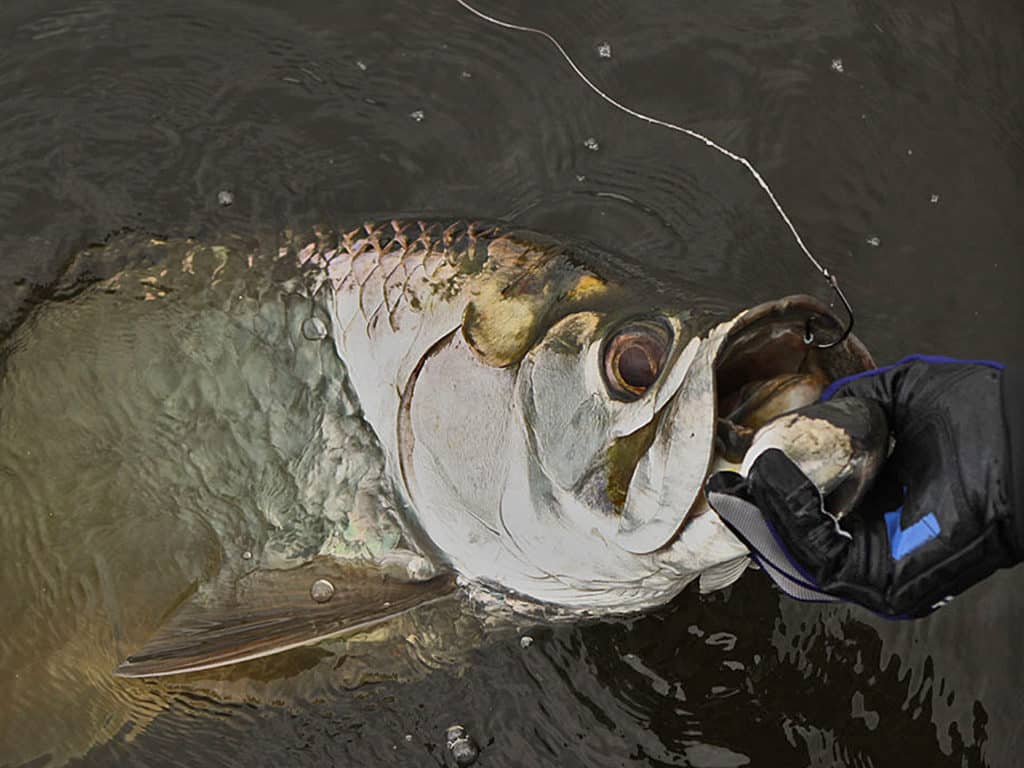
Then, moving water is the key, so Government Cut, where his anglers have caught tarpon as large as 180 pounds, becomes a hot spot. The veteran guide likes to free-line big shrimp in the winter and drifts to cover more water. “The ideal drift speed is 0.5 to 1 .5 mph. Any faster and I use a drift sock to slow the boat. The bait needs to stay ahead of the boat during the drift, so I only use a float when there’s no drift at all, which rarely happens,” Kostyo says.
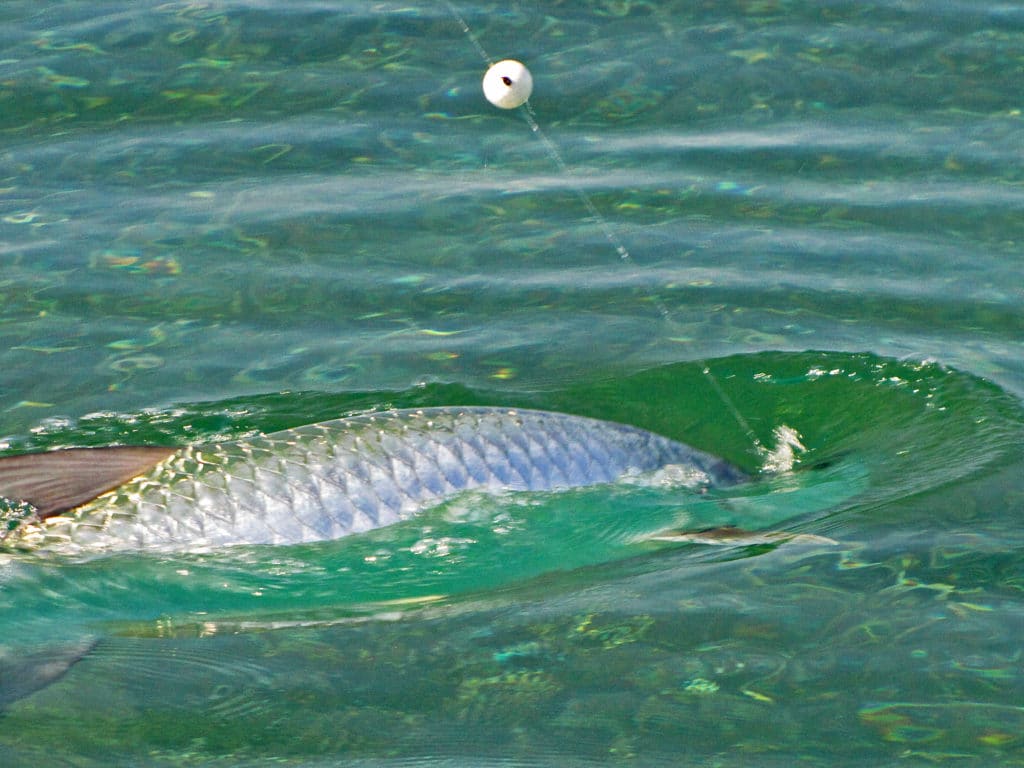
Unless the winter has been unusually cold and long, some tarpon start showing up in various Gulf Coast bays, the Everglades and in backcountry basins of the Lower Keys as early as February, spreading out and increasing steadily in numbers in March and early April when the fish really stack up in preparation for their big annual migration. According to Kostyo, the action remains solid in Miami, and in the spring, he centers his attention on Government Cut first, later opting to drift oceanside as the summer approaches, adding crabs, pinfish and, briefly, mullet (during the peak of the spring mullet run) to the mix.
Drift Fishing for Tarpon
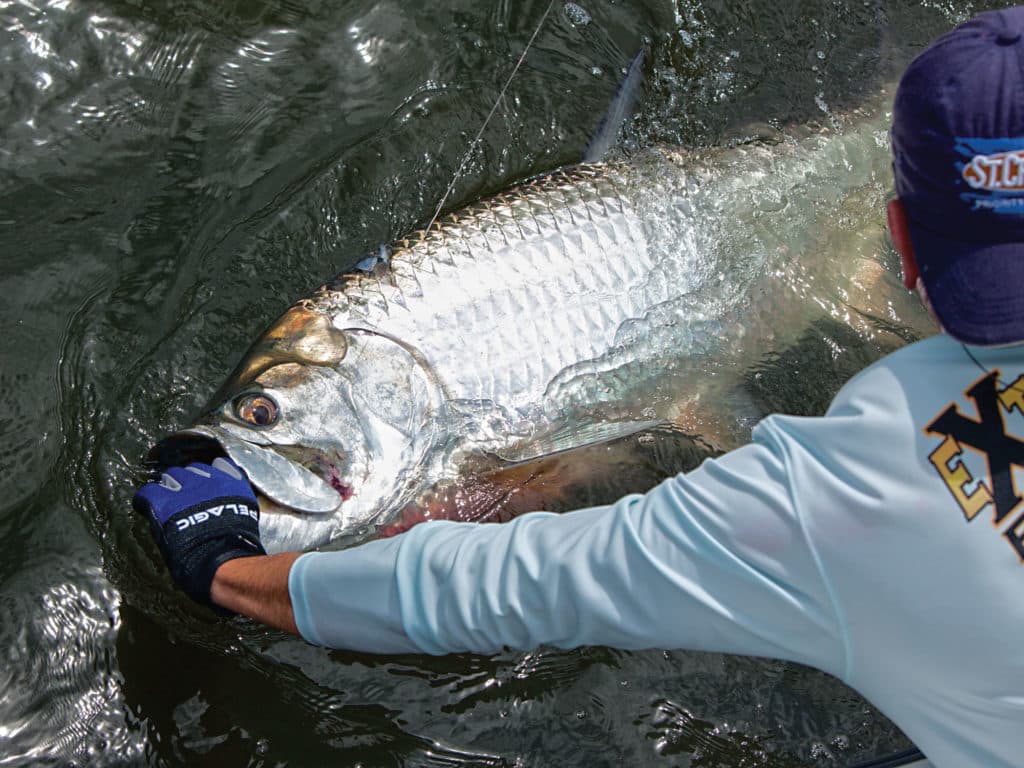
A drift sock deployed from the bow slows the boat and keeps it drifting stern first, making it easier to fish baits down-current from the aft cockpit or transom. Drifting baits from an anchored boat requires a quick-release system (a release clip and a buoy) to instantly free the boat from its anchorage to follow a hooked tarpon. Baitfish, either free-lined or fished under a float, can be held in the current 50 to 100 feet behind the boat. Crabs, however, don’t appear natural when held in the current. If fished from an anchored boat, it’s best to drift crabs under a float, reel them in once they get 100 yards away, and then set them adrift again.
How to Fish Live Bait for Tarpon from Your Boat
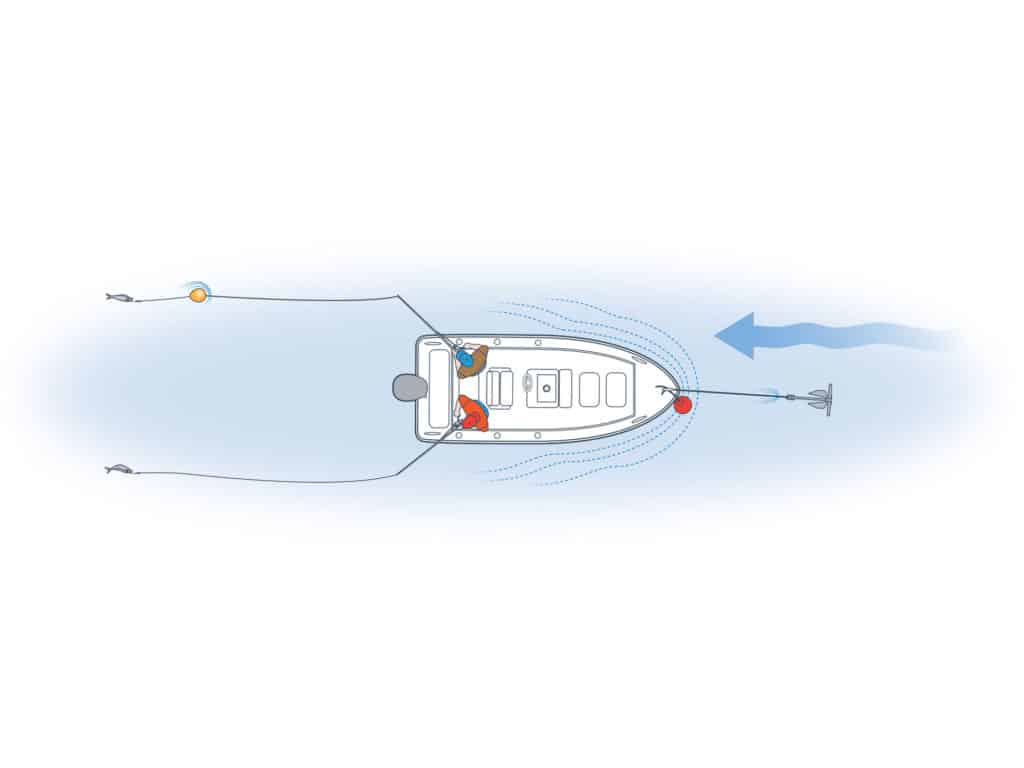
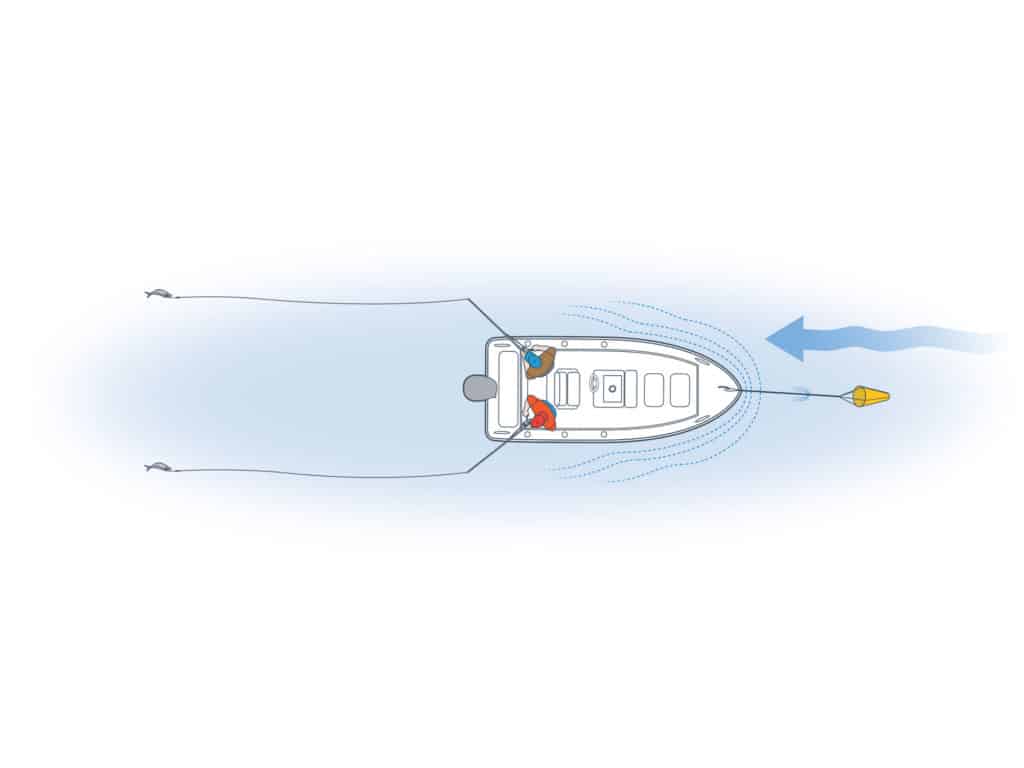
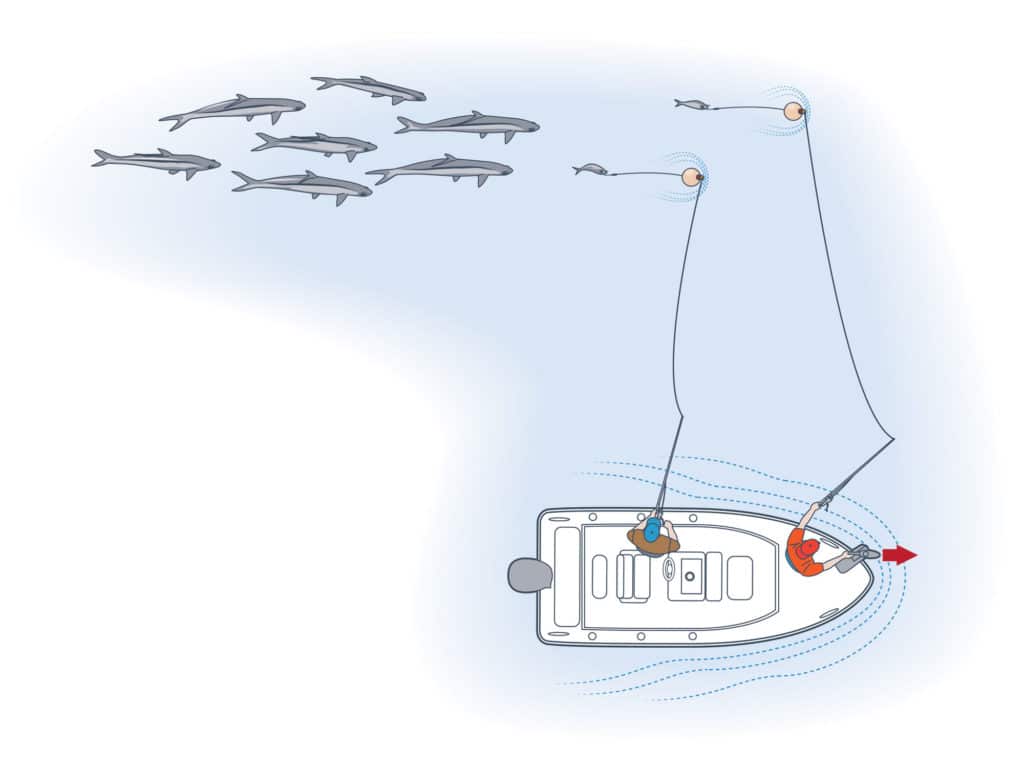
Different Baitfish Options for Tarpon
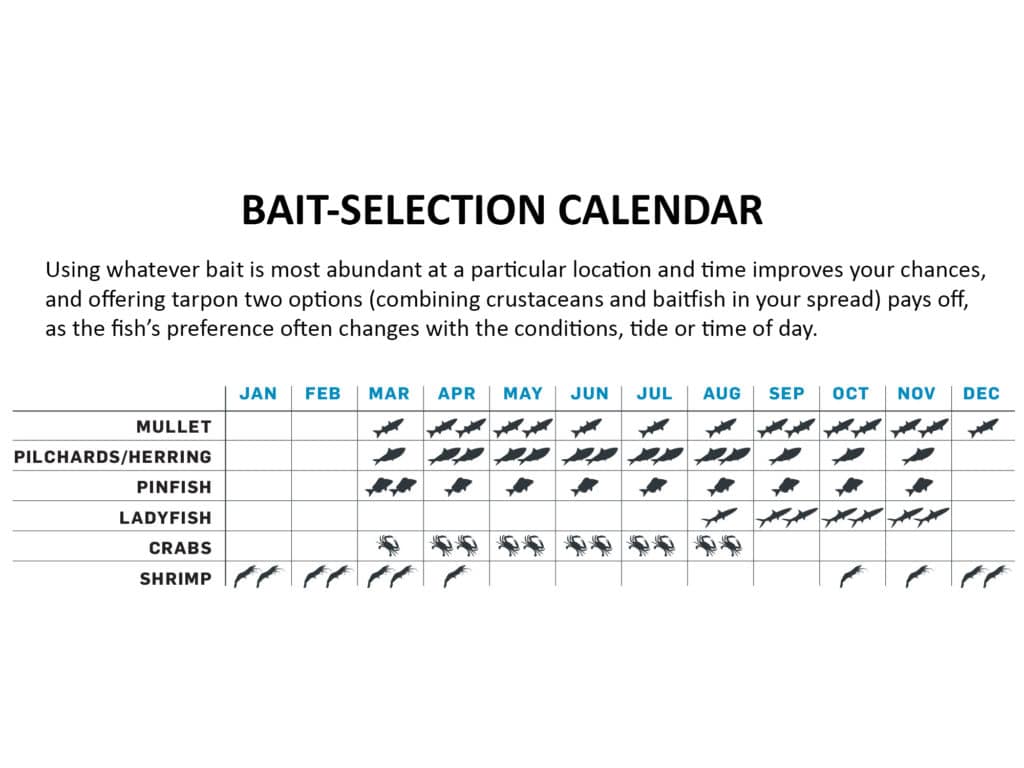
BAIT-SELECTION CALENDAR
